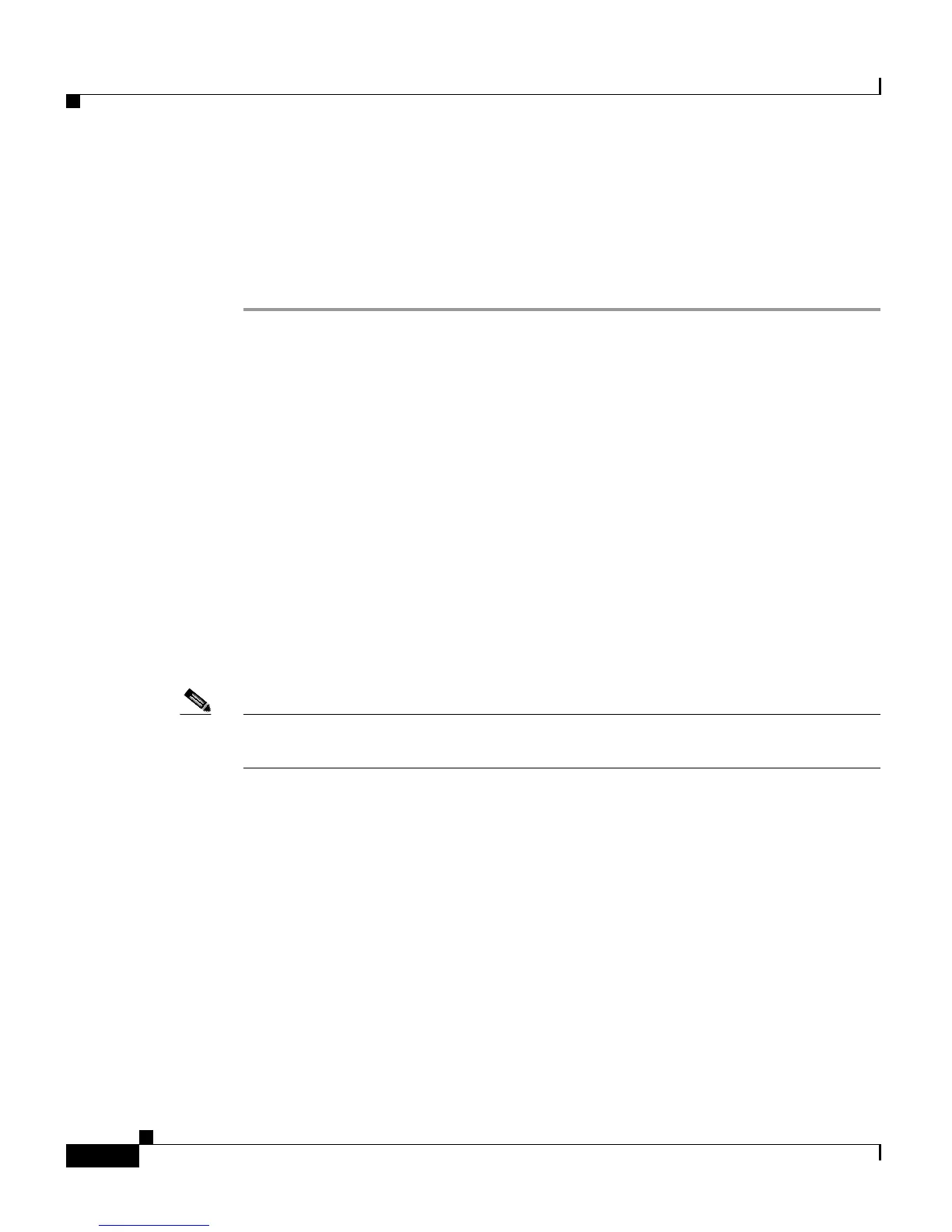Chapter 6 Configuring Cisco Applications
Adding Application Triggers
6-20
Cisco Customer Response Solutions Administration Guide, Release 4.1(1)
Step 2 On the navigation bar, click the JTAPI Triggers hyperlink.
The first JTAPI Trigger Configuration summary web page opens.
Step 3 Click the Add a New JTAPI Trigger hyperlink.
Step 4 Follow the procedure described in Adding a CM Telephony Trigger, page 6-12.
Related Topics
• About CRS Applications, page 6-2
• Adding a JTAPI Trigger, page 6-18
• Adding a JTAPI Trigger, page 6-18
• Provisioning the JTAPI Subsystem, page 3-4
• Configuring HTTP Triggers, page 5-9
Adding an HTTP Trigger
A Cisco application can be used to handle HTTP requests when the CRS system
is provisioned with an HTTP trigger.
Note HTTP triggers are available if your system has a license installed for one of the
following Cisco product packages: Unified IP IVR or Unified CCX Premium.
An HTTP trigger is the relative URL a user enters into the client browser to start
the application. You can upload either eXtensible Style Language Transformation
(XSLT) templates or Java Server Pages (JSP) templates to serve as your HTTP
trigger.
The following path is an example of an HTTP-triggered request (using the HTTP
trigger name “/hello”):
http://www.appserver.acme.com:8080/hello
In this example, the URL starts the application with the HTTP trigger “/hello” on
a web server running on port 8080 with the host name www.appserver.acme.com.
You can add the HTTP trigger from the Cisco Script Application web page or add
the trigger from the HTTP subsystem.

